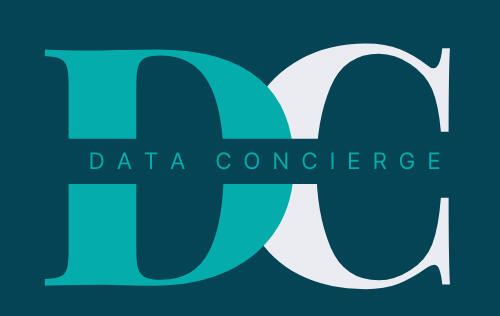- Data Concierge
- Posts
- How to Describe a Database to a Non-technical Person?
How to Describe a Database to a Non-technical Person?
Use an analogy whenever possible.
Hello all, and hope your week has been great! I spent a few days in Miami Beach for a work conference. It was so great to see some of my coworkers in person. Since it was a sales focus meeting, I learned quite a few things about customer service that can be applied to data analytics. Stay tuned for more.
It was exciting to guest blog on Gigasheet, which is a spreadsheet built for big data! When it's ready, I'll share with you all.
Also, another exciting news is that now I have more than 100 followers on Medium and just applied for the Medium partnership program. Check out my articles here:
Learn more about the book Data Concierge Agile Playbook I'm writing here:
For the love of God, use an analogy when communicating with a non-tech audience!
I used to be a geneticist. It was painful for me to see how my fellow scientists explained why their work mattered to the external investors. Only their niche would understand the jargon they used.
We have the same problem in data analytics.

What Is a Database?
I’ll show you how to help your stakeholders understand what a database is. Everything needs to be communicated in simple terms with a non-tech audience. Otherwise, you’ll lose their attention and trust faster than you can build it.
You take what you know for granted. Most stakeholders don’t know what a database is.
You need to figure out their baseline understanding before you start a project. Otherwise, it’d be a very painful session for both parties.
Real Story
My team and I were trying to figure out how to automate a data-pulling task. I wanted to know what type of databases my stakeholders were using. To me, it was a matter of figuring out the database schema and the login information. Once we get that, we can automate this via the Azure pipeline. Simple, so I thought.
To my surprise, the meeting didn’t go well. The stakeholders couldn’t understand what we were trying to help them with.
“Where does your data come from?” I asked.
They didn’t seem to understand my question.
“How do you access the data when people need you to provide it? What databases do you use?” I clarified.
“I get it using Smartsheet.” they said.
We spent almost 30 minutes going in circles. They were frustrated with my interrogation.
I finally asked, “When I say the word database, what does it mean to you?”
They couldn’t answer it.
We ran out of time and accomplished nothing. However, that last question was a breakthrough — my audience didn’t understand what a database was!
What I Would Do Differently
First, I’ll gauge their understanding before jumping straight into a task!
“Could you describe in your own words how you access your data?”
Stakeholder A: “It’s from a SQL database where the IT manages for us. Pete writes the SQL code for us to get the data.”
Stakeholder B: “I get everything from Smartsheet. It’s neat because I can do everything without leaving Excel.”
Stakeholder A knows what a database is. Proceed to get your technical requirements for a project.
Stakeholder B is clueless. Take the time to explain what a database is.
What I Would Say to a Non-technical Audience
“If data is like money, a database is like a bank account where each record is a ledger. You can pull data by ledger numbers. A database is a place where your data is organized in a table format.”
If an analogy doesn’t work, you can show them an example of a database.
Let them absorb what you just taught them. Encourage them to teach you what they just learned from you. Assess their understanding fully before getting the technical requirements.
Take the Time to Explain
Yes, it’s extra work. However, it’s well worth the investment for better relationships with your stakeholders. Otherwise, they’ll only see you as a skilled worker, not an equal partner.
Data analytics teams often become cost centers because you don’t speak the business language. If you don’t communicate your value to them, how will they know you can be valuable partners?
Keep it simple.
Use an analogy when working with a non-tech audience.
I’d love to know how my experience has helped you and the problems you're facing now. Email me at: [email protected]
If you like me to
1) guest post on your platform,
2) provide copy writing service, and
3) help with data project management.
Feel free to book a discovery call via Calendly here.
Follow me on Twitter @MoJVillagran and send me a DM. And don’t forget to share this newsletter with your friends and colleagues.
I'm also on Medium. Read more here:
If you love what you read, give me a shoutout here:
If you'd like to give better presentations at work and hone your public speaking skills, let Christopher transform you into star speakers.
|





Reply